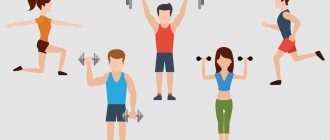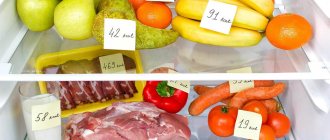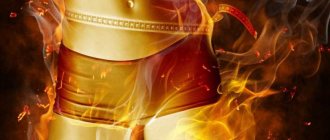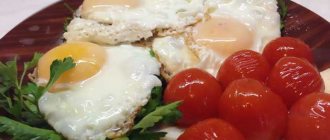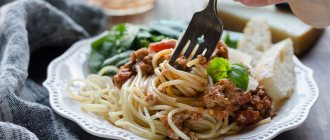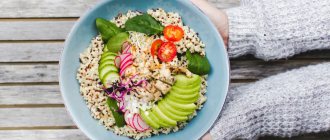The process of fat burning during training
When an ordinary person has the idea that his weight has somehow gone beyond the desired values and needs to be somehow brought back to normal, then the decision to do fitness, run, swim, etc. seems quite logical.
In general, it is worth increasing physical activity, which will increase energy expenditure and help reduce excess weight and “burn” subcutaneous fat. The decision has a well-founded logic, because gaining and losing weight is nothing more than the simple mathematics of the balance of incoming and outgoing calories. However, no matter how paradoxical it may sound, training in this aspect is very much overrated. Losing those hated pounds without following a diet is virtually impossible. Mathematics is not an abstract science, but an exact one. Our fat burning program, including. Therefore, if you use specific numbers rather than figurative quantities, the overall picture begins to look somewhat different. I bring this “mathematics” in numbers to your attention.
Interesting ways to avoid dieting
Remember a few rules that will help you trick your body and make it lose weight a few days after you start training.
- Turn your walk into a workout using your own calories by bending your elbows 90 degrees and pumping up your arms as you walk. Not only does this automatically speed up your pace, but it also helps you burn up to 15% more energy.
- Favorite music. You can fight calories with your favorite songs: developing your favorite playlist will help you stay on the move 20% longer and burn more calories. Music blocks fatigue, induces a feeling of alertness and helps you keep up by synchronizing your movements.
- Weights. To really target the fat layers, you need to slightly increase the load. A small weighting agent will help you in this matter. Those who used heavy dumbbells burned 25% more calories.
- Cold water in hand! To avoid feeling too tired to the point of exhaustion, control your body temperature using a simple method - hold a bottle of cool water in your hands. This will help you last longer on long walks.
- Alternate the pace - do not let your body get used to monotony. Watch your heartbeat. You must constantly enrich your cells with oxygen, and when shortness of breath appears, go for a calm walk. After resting, speed up. This is an alternative to strength training and cardio exercises with variable intensity.
Never try to replace walking or outdoor exercise with treadmills and exercise machines in gyms. Do you know how many calories are spent jumping rope in the yard? Almost one and a half times more than indoors. Oxygen and proper breathing also play a big role in this matter. If this is not possible, open the windows or ventilate and cool the room where your class will take place in advance. Heat and stuffiness are not the best companions in the fight for health and physical activity, and the heart does not need such a load.
Calories in
So, in order to lose excess weight, it is necessary to ensure a negative balance between calories in and calories out. Therefore, the first step is to understand how many calories are in the “arrival”.
All food that enters our body consists of basic nutrients - Proteins, Fats and Carbohydrates, abbreviated as BJU. Each nutrient has its own energy value, namely, how much energy a given nutrient can provide to our body if used as fuel. Energy is measured in joules (J); in nutrition, it is usually measured in calories (cal). The correspondence between the second and the first looks like 1 cal = 4.184 J. [1] If the body uses proteins or carbohydrates as fuel, then this gives 4 kilocalories (kcal) per 1 gram of substance used, if fats - then 9 kcal.
For example, if we ate 2 eggs and a sandwich with butter and cheese for breakfast, then the energy value of our meal will be [2]:
- Eggs B = 12.7 g % F = 11.5 g % Y = 0.7 g % kcal = 157 (100 g serving)
- Russian cheese B = 23 g % F = 29 g % U = 0 g % kcal = 72 (serving 20 g)
- Wheat bread B = 8.7 g % F = 1.5 g % Y = 39 g % kcal = 21 (10 g serving)
- Butter 82.5% B = 0.5 g % F = 82.5 g % Y = 0.8 g % kCal = 75 (10 g portion)
- In total, the total calorie content of breakfast will be 325 kcal
According to the example given, the entire daily calorie content is calculated and this is the amount of energy that we have in the so-called “arrival”. To lose weight, you need to spend more energy (kcal) than you consume or eat less than you expend. No less important is alcohol. One gram of alcohol is 7 kcal. For example, 100 ml of vodka contains 40% alcohol, which gives 40 * 7 = 280 kcal. 100 ml of beer contains from 4 to 7% alcohol, sugar 3 - 4%, therefore, if you drink a “bottle” (0.5 l) of beer, you can get about 230 kcal (based on U = 3.5 g%, alcohol 4.5 g% 3.5 *4*5 + 4.5*7*5)
System for reducing caloric content of foods
To lose weight, most people need to reduce the number of calories they consume and increase their physical activity according to diet recipes. In general, this means that in order to lose 0.7 kilograms per week, you need to reduce your daily calories by 500-750 units.
Diet or exercise: which matters more? Both factors are important. Diet has a stronger effect on weight loss than physical activity. The latter, including exercise, has a stronger effect on preventing weight regain after weight loss. To restore the strength spent on exercise, you need to understand how many calories are spent when pumping the abs or another part of the body in 1 minute. This will allow you to correctly schedule your training plan.
How many calories are burned?
Let's start with the fact that every living organism has a Basic (basal) Metabolism (BM). Basal metabolism is the proportion of daily energy expenditure for the activity of internal organs and tissues, for constant physiological functions (breathing, blood circulation, muscle tone, etc.) [1] Basal Metabolism is measured on an empty stomach in a supine position at an air temperature of 18 - 20 C. On average in an adult, the OO value is 1 kcal per kg of weight per hour. For example, if you weigh 80 kg, then your daily OO will be 1 kcal x 80 kg x 24 hours = 1920 kcal. The OO figure will be slightly different for boys (14-17 years old), whose OO is significantly higher - 1.7 kcal, for girls, their OO is 1.2 kcal, for people over 40, their OO, on the contrary, becomes less by 4-5% , and at an older age it decreases even more significantly - by 10%. [1]
Basic Metabolism is, as it were, the starting point for calculating energy expenditure, to which additional calories are added as household/work or sports activity increases. The energy consumption figures are quite clear; they are measured using the calorimetry method, so it is quite easy to calculate the final energy consumption figure. In particular, according to the “Physiology of Nutrition” [1], “background” household energy consumption - for housework, walking to the store or work, personal hygiene, etc., is generally considered to be 2 kcal. The cost of mental activity, say, office work, is like 1.5 kcal. Energy expenditure on physical work, of course, is already large and, for example, the work of a bricklayer or miner is 6 kcal.
Now, knowing the figures for energy expenditure during various types of life activities, we can calculate the above example of an 80-kilogram person more accurately. Let's assume that he gets 8 hours of sleep, he works as a manager in an office (8-hour work day) and there is no training today. (in fact, training energy expenditure will be given separately, since this is what the emphasis is on in this article).
So, the daily energy expenditure of a person weighing 80 kg on a working day (8 hours) by a manager will be:
- Sleep: 8 hours x 1 kcal/hour x 80 kg = 640 kcal
- Work: 8 hours x 1.5 kcal x 80 kg = 960 kcal
- Background activity of the day: 8 hours x 2 kcal x 80 kg = 1280 kcal
- TOTAL: 2880 kcal
Rules for creating a diet
During the diet you need to follow simple rules:
- Eat in small portions, but 5-6 times a day (3 main meals and 2-3 snacks). This helps cope with hunger and speed up metabolism.
- Eat food at the same time. Gradually, the body will learn to receive and digest food on a schedule, and the feeling of hunger will arise only before a meal.
- Include predominantly protein foods in your diet (this will help increase muscle mass, make your body stronger and more resilient).
- Start your morning with a glass of warm water.
- Avoid fried foods. Products can be boiled, steamed or grilled, or baked.
During the diet, you must avoid fried foods.
Permitted and prohibited products
The following products should predominate in the daily menu:
- dietary meat (poultry fillet, beef, veal, rabbit);
- low-fat varieties of hard cheese;
- dairy and fermented milk products (fat content no more than 1.5%);
- porridge (oatmeal, rice, buckwheat, millet, corn);
- vegetables, raw or cooked;
- fruits (except sweet grapes);
- dark chocolate without sugar, natural honey.
You need to exclude the following products from the menu:
- baked goods made from white flour (including bread);
- fatty meats, fish and seafood;
- smoked meats;
- candies, sugar, sweets, ice cream;
- sausages;
- pickled foods and pickles;
- carbonated drinks, alcohol.
Alcohol is a product that should be avoided.
BJU ratio
A calorie deficit helps you lose weight.
But it is important that the body receives energy substrates and “building” substances in sufficient quantities. Therefore, it is necessary to calculate the ratio of BZHU daily, which must meet the following standards:
- fats - 15% (about 1.1 g of fat per 1 kg of human weight, sources of lipids should be plant products and fish);
- proteins - 30-35% (daily value - 2 g/kg);
- carbohydrates - 50-55% (preference is better given to complex, hard-to-digest sugars).
Energy distribution
When composing your diet, you should divide the calorie content of food in this way:
- breakfast - 380 kcal;
- lunch - 190 kcal;
- lunch - 580 kcal;
- afternoon snack - 220 kcal;
- dinner - 430 kcal.
Drinking regime
Drinking plenty of fluids is an important part of any diet.
Water accelerates metabolism, cleanses the body of waste and toxins, improves the functioning of the digestive tract and prevents constipation. You need to drink at least 1.5-2 liters of liquid per day. It is better if it is pure water without gas, but herbal infusions, unsweetened compotes, and green tea are suitable.
During the diet, you need to drink 1.5-2 liters of clean water per day.
Duration
1800 kcal is enough to support the normal functioning of the body (if we are talking about women). Therefore, the diet can be followed for 2-3 months without any threat to health. But the calorie content of the diet needs to be increased during intense physical activity.
How energy expenditure is measured
Methods for determining energy expenditure are called calorimetry. There are two such methods - Direct and Indirect calorimetry.
- Direct, the method is labor-intensive and is rarely used, only in laboratory conditions. It is almost impossible to apply it to a person, especially during various types of physical activity. The very meaning of the method is that, assuming that all types of energy in the body are ultimately converted into heat, then by determining the amount of heat released by the body, you can calculate the number of calories expended. With this measurement, the subject is placed in an isolated volume, such as a pressure chamber, in which the change in temperature of the subject can be recorded. Doing this, say, with laboratory mice is quite possible, but with a person who performs some type of physical activity, you understand, it is quite problematic. Therefore, in relation to people, the second method is used.
- Indirect calorimetry is based on the measurement of the main oxidation products of organic substances, which include carbon dioxide (CO2) and nitrogen (NH3). For this, a portable breathing device is used - a gas analyzer, which measures the amount of inhaled O2 and exhaled CO2. This method is not as cumbersome as the first one, and it can be used for various types of activities, say, the load on an exercise bike and measuring an athlete’s energy expenditure in this case is quite simple.
To measure energy consumption using this method, tables and the so-called are used. Respiratory Coefficient (RK).
Respiratory Coefficient is the ratio of CO2 released by the body to oxygen consumed O2. This coefficient for carbohydrates is equal to 1, for fats – 0.707, for proteins 0.801. [1]
Having measured the amount of inhaled O2 and exhaled CO2, the first step in calculating energy expenditure is to take into account the energy expenditure of protein. To do this, the nitrogen excreted in the urine is analyzed. With normal sweating, the amount of urine nitrogen will correspond to the amount of oxidized proteins - 1 g of urine nitrogen = 6.25 g of protein. [1] Thus, the total amount of nitrogen will make it possible to calculate the total amount of protein consumed.
The second step of the calculation is to determine “protein-free” energy expenditure. To do this, the corresponding values of gases used for protein metabolism are subtracted from the total volumes of CO2 and O2. It has been established that the oxidation of 1 g of protein consumes 966.3 ml of O2 and produces 773.9 ml of CO2 [1]. By multiplying these values by the amount of oxidized protein and subtracting these values from the total volume of measured gases, the remainder is protein-free values of carbon dioxide and oxygen.
Next, the Respiratory Coefficient is included in the calculation. The CO2/O2 ratio will show in what proportion the energy consumption of carbohydrates and fats occurred. The resulting amount of fats and carbohydrates is multiplied by the caloric value of the corresponding substance (9 kcal for fats and 4 for carbohydrates) and the already calculated caloric content of oxidized proteins is added at the rate of 1 g x 4 kcal. As a result, the total energy consumption is obtained using the Indirect Calorimetry Method.
BJU ratio
You can also lose weight on bread and water, but if you want the process to be slow, gradual, without harm to your health, it is important to monitor the balance of BJU. The formula is simple: 30-35% proteins, 15% fats, 50-55% carbohydrates. The General Food menu has 1,800 calories evenly distributed throughout the day. This is not a diet, but a new way of life, without hassle in the kitchen and searching for healthy products. Please note that you cannot skip meals or change their places; to achieve results, you must follow the distribution of food intake throughout the day.
How many calories are burned during exercise?
How many calories are burned during training? It was indicated above that a miner’s energy expenditure, amounting to 6 kcal/hour/kg, can be taken as comparable values to strength training. We take them as a starting point, however, the final figure of energy expenditure for a workout must be adjusted, and not simply multiplied by 6 kcal by the time spent in the gym. 6 kcal will not be spent the entire training time, but only when the person is “under load”, i.e. lifts the barbell. The rest time between approaches, when we sit, lie or at best walk, is unreasonable to calculate according to the “miner’s caloric value”, as you understand. The rest time in terms of calories is comparable to normal background energy expenditure, which is expected to be 2-3 kcal/hour/kg.
Considering the above, energy expenditure for a 2-hour workout in the proportion of 1 min approach/3 min rest, for an 80 kg athlete will have the following values:
(80 kg * 2 hours * ¼ * 6 kcal) + (80 kg * 2 hours * ¾ * 2 kcal) = 240 kcal + 240 kcal = 480 kcal
Thus, if a 2-hour strength training is carried out, then this requires 480 kcal. And, to be more precise, only 240, since we would have spent half of the “training” energy expenditure in any case. These are “background” energy expenditures that the body spends during normal household activities, for example, if we stayed at home and, say, cooked dinner.
However, the reader can say that there are also “training” 240 kcal left and neglecting them would be incorrect mathematics. If we add up the training 240 from the first, second and subsequent workouts, they will ultimately lead us to the desired result!
I am not against training; moreover, being an athlete and a coach, I cannot be against training. However, mathematics is an exact science! 240 kcal – how much is in fat? Dividing 240 by the energy value of fat (9 kcal), we get 27 g. That is, if we take into account that we spent all the energy in fat, which is not the case, then we will burn 27 g of fat during the workout. How much do you want to lose, 2 kg? No, 10 kg? Then calculate how many workouts you need to do to lose 2 kg. Do you know how much? 74! How many times a week do you plan to exercise, 3 (THREE)? Then you need 24 weeks or 6 months to lose 2 kg of fat only by training without changing your diet! ...if 10 kg, then 2.5 years!
The essence and principles of the 1800 calorie diet
To function, the body needs energy, which it receives through food processing. If more energy substrates are supplied with food, then their excess is deposited in the form of subcutaneous fatty tissue.
When food calories are reduced, the body is forced to burn glycogen and fat reserves. The amount of energy used by the body depends on a person’s weight, height, gender, presence of chronic diseases, and lifestyle. But 1800 kcal is often enough for women to maintain weight or even get rid of extra pounds.
What reduces the effectiveness of training fat burning?
- Psychology. When starting to train, a weight loss enthusiast gives himself the indulgence to eat a little more and a little tastier. The rationale here is: “I work out, burn calories, so I can afford to eat this bun.” The calorie content of an ordinary bun is approximately 260 kcal; if it is rich, then it is approximately 330 kcal! We compare it with the energy expenditure of training, and we get that by eating an “extra” bun, you can completely forget about the process of losing weight!
- As a rule, the fair half of humanity is concerned with fat burning and very often only aerobic exercises are chosen for this purpose. Let's say you do cardio on a treadmill 3 times a week. Energy costs in this case will be even less significant. If we assume that the weight of our representative of the weight loss is 60 kg, she does cardio for an hour, then, excuse me, it is absolutely unreasonable to calculate her energy expenditure according to the caloric intake of a miner! She will be able to develop energy expenditure to a level of, well, 3, maximum 4 kcal. If you calculate what you get in practice, it will be: 60 kg * 1 hour * 4 kcal = 240 kcal
Sample menu for a week for 1800 calories per day
It is better to prepare the menu in advance. If you know what you'll be eating on a given day, the temptation to eat a hamburger or candy bar will be less.
Monday
Example menu for Monday:
- morning: 2 tbsp. oatmeal with milk, 20 g prunes, 2 slices of bran bread with low-fat cheese;
- lunch: 1 banana, ½ tbsp. yogurt;
- afternoon: 200 ml chicken broth with noodles, 150 g rice, 150 g chicken breast;
- snack: 40 g walnuts or peanuts;
- evening: 150 g baked hake fillet, 200 g tomato salad, 150 g boiled potatoes.
Tuesday
A daily meal plan might look like this:
- breakfast: 200 g buckwheat porridge with 1 tsp. butter, rye bread, 20 g cheese;
- snack: 2 peaches, ½ tbsp. kefir;
- in the afternoon: 300 ml of lean borscht, 100 g of pork liver stewed with onions, 200 g of baked potatoes;
- snack: 30 g almonds, 200 g cottage cheese;
- dinner: 150 g chicken breast, 150 g seaweed salad.
Wednesday
Menu for Wednesday:
- in the morning: a sandwich of rye bread with cheese, 2 boiled eggs;
- lunch: 200 g of cucumber, onion and tomato salad;
- daily meal: 300 ml cabbage soup with potatoes, 100 g boiled beef, 100 g buckwheat porridge;
- afternoon snack: 30 g raw sunflower seeds, 1 tbsp. kefir;
- dinner: 80 g of boiled peas, 150 g of pollock baked in foil.
Energy value
Excess calories in almost all cases leads to weight gain or obesity. This is an axiom. In old age, excessive consumption of excessively high-calorie foods, in addition to excess weight, can trigger pathological processes that will lead to the development of diabetes mellitus, atherosclerosis, arterial hypertension, gout, urolithiasis, cholelithiasis.
By the way, according to a study by American scientists, the amount of calories consumed with food can affect life expectancy and even accelerate aging.
On average, the daily norm of energy value in old age is:
- for men – 2,300 kcal;
- for women – 2,100 kcal.
With age, the norms change somewhat. Thus, the World Health Organization recommends gradually reducing the amount of calories in the period from 30 to 70 years by a total of about 30%.
The lifestyle of an elderly person is also important. If he is still active or working, his energy needs are greater than those of his more passive peer. As the interlocutor said, controlling daily caloric intake is quite simple: if the weight is stable, then everything is normal. In any case, you need to adhere to the following rule: the number of calories per meal should not exceed energy costs.

